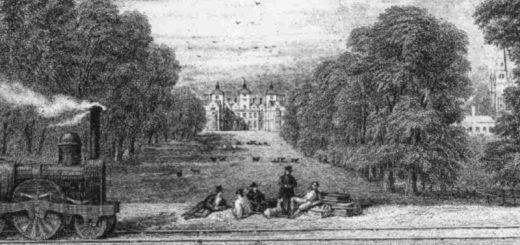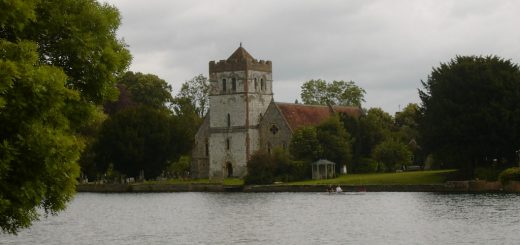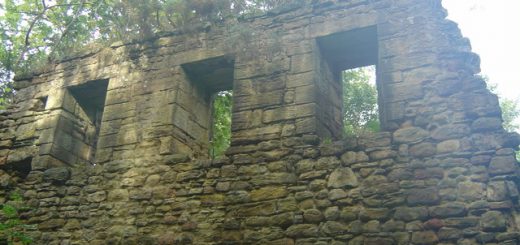Holland House
Situated in a 500 acre estate, some of which is now survives as Holland Park, the house was originally known as Cope Castle and was built in 1605 for Sir Walter Cope. His daughter married Henry Rich, 1st Earl of Holland (1590 – 9 March 1649) who inherited the property and is said to haunt it.
 The Earl of Holland was a Royalist officer during the Civil War and surrendered after being defeated at the Battle of St Neots on 10th July 1648. He was found guilty of being a traitor and beheaded in the Tower of London on 9th March 1649. For more details concerning Henry Rich and his capture, see The New Inn, St Neots, where he is also supposed to haunt.
The Earl of Holland was a Royalist officer during the Civil War and surrendered after being defeated at the Battle of St Neots on 10th July 1648. He was found guilty of being a traitor and beheaded in the Tower of London on 9th March 1649. For more details concerning Henry Rich and his capture, see The New Inn, St Neots, where he is also supposed to haunt.
Cope Castle was adopted by the Roundheads as an army headquarters which was often used by Oliver Cromwell.
The building was named Holland House after the war when it was returned to the family. In 1721 it passed into the hands of the Edwardes.
In 1940 it suffered during an extensive German bombing raid over London, which destroyed much of the building. Following World War II the house and grounds were passed to the local authority with Holland Park opening in 1952. Holland House is currently a restaurant and Youth Hostel.
There are two ghost stories attached to Holland House. Henry Rich, 1st Earl of Holland reputedly haunts the Gilt Room. He is said to emerge from a secret doorway and walk across the room, some say carrying his head.
Another strange apparition appeared to Lady Diana Rich whilst walking in the grounds of Holland House. She came across an apparition of herself, an identical mirror image. A month later she died of small pox. In the love letters of Dorothy Osborne to Sir William Temple 1652-1654, Lady Diana Rich, daughter of 1st Earl Holland was described as seeming to have been of a lively, vivacious temperament, and very popular with the other sex. Within the letters they refer to her having an eye condition of some sort and having died unmarried by 1653.
Her sister Lady Isabella Thynne, wife of Sir James Thynne of Longleat is also supposed to have seen an apparition of herself just before she died.




Re: Holland House
This is what John Ingram had to say about the Holland House case in his 1897 book The Haunted Homes and Family Traditions of Great Britain
The History of Holland House by the Princess Marie Lichtenstein, the adopted daughter of the present Lady Holland, is a -well-known popular account of one of the most interesting London residences extant. The many highly-gifted men and beautiful women, who have frequented Holland House for several generations past, have endowed it with memories of a most attractive nature ; but the Princess Marie’s work tells us that reminiscences of a far less pleasing character hover about the old house, and, indeed, that, like most respectable dwellings of any antiquity, Holland House is haunted, At least two ghostly legends, according to the fair authoress, are connected with it.
An ancient manor-house, belonging to Sir William Cope, it is believed, formerly stood where Holland House now stands, and, so it would seem, was incorporated in the present mansion. Sir William Cope’s daughter and heiress, Isabel, was married to Sir Henry Rich, created Baron Kensington in 1622, and sent to Spain by James the First, to assist in negociating a marriage between Prince Charles and the Infanta. In 1624 he was created Earl of Holland, and it was this same nobleman, as the Princess tells us, ‘* who added to the building its wings and arcades, and more than this, he employed the best artists of the time in decorating the interior."
Clarendon describes the Earl as "a very handsome man of a lovely and winning presence, and gentle conversation." He played, says the historian, a con- spicuous part during the reign of Charles the First and the commencement of the struggle with the Parliament. After having stood in high favour with Queen Henrietta, he fell under suspicion of disloyalty, which was confirmed by his lending Holland House for a meeting between Fairfax and certain discontented members of Parliament. The year following, having rejoined the Royalists. he was taken in arms at St Neot’s, and, having been imprisoned in Warwick Castle, he was condemned to death, and beheaded in March 1648-9 in Palace Yard. Warburton, in a note to Clarendon’s History, says : " He lived like a knave, and died like a fool. He appeared on the scaffold dressed in a white satin waistcoat, and a white satin cap with silver lace. After some divine conference with a clergyman and an affectionate leave-taking with a friend, he turned to the executioner and said, ‘ Here, my friend, let my clothes and my body alone ; there is ten pounds for thee that is better than my clothes, I am sure of it. And when you take up my head, do not take off my cap.’ " He appears, however, even by Warburton’s account, to have died with much firmness, and his head was severed by one blow from his body.
This Lord Holland, the first of his name, and the chief builder of Holland House, is, the Princess Lichtenstein tells us, believed to yet haunt one room of the splendid old mansion. " The gilt room is said to be tenanted Dy the solitary ghost of its first lord, who, according to tradition, issues forth at midnight from behind a secret door, and walks slowly through the scenes of former triumphs with his head in his hand. To add to this mystery, there is a tale of three spots of blood on one side of the recess whence he issues three spots which can never be effaced."
In the grounds of Holland House is " the Green Lane," formerly called " Nightingale Lane," as long as nightingales frequented it. " It is," says the Princess, " a long avenue, like an immense gallery arched with trees and carpeted with grass, the distant light at the end softening down into that misty blue so peculiar to dear England." This avenue is the scene of a " spiritual experience," chronicled by Aubrey in his Miscellanies, and which is as follows :
" The beautiful Lady Diana Rich, daughter to the Earl of Holland, as she was walking in her father’s garden at Kensington, to take the air before dinner, about eleven o’clock, being then very well, met her own apparition, habit and everything, as in a looking-glass. About a month after she died of small-pox. And ’tis said that her sister, the Lady Isabella Thinne, saw the like of herself also before she died. This account I had from a person of honour."
"A third sister, Mary, was married to the Earl of Breadalbane," we are informed, and it has been recorded that she also, not long after her marriage, had some such warning of her approaching dissolution.
And so the old tradition has remained, and who would wish, it removed? Belonging to past times, it should" be respected. But whether we respect tradition or not, it is a received fact that, whenever the mistress of Holland House meets herself, Death is hovering about her.